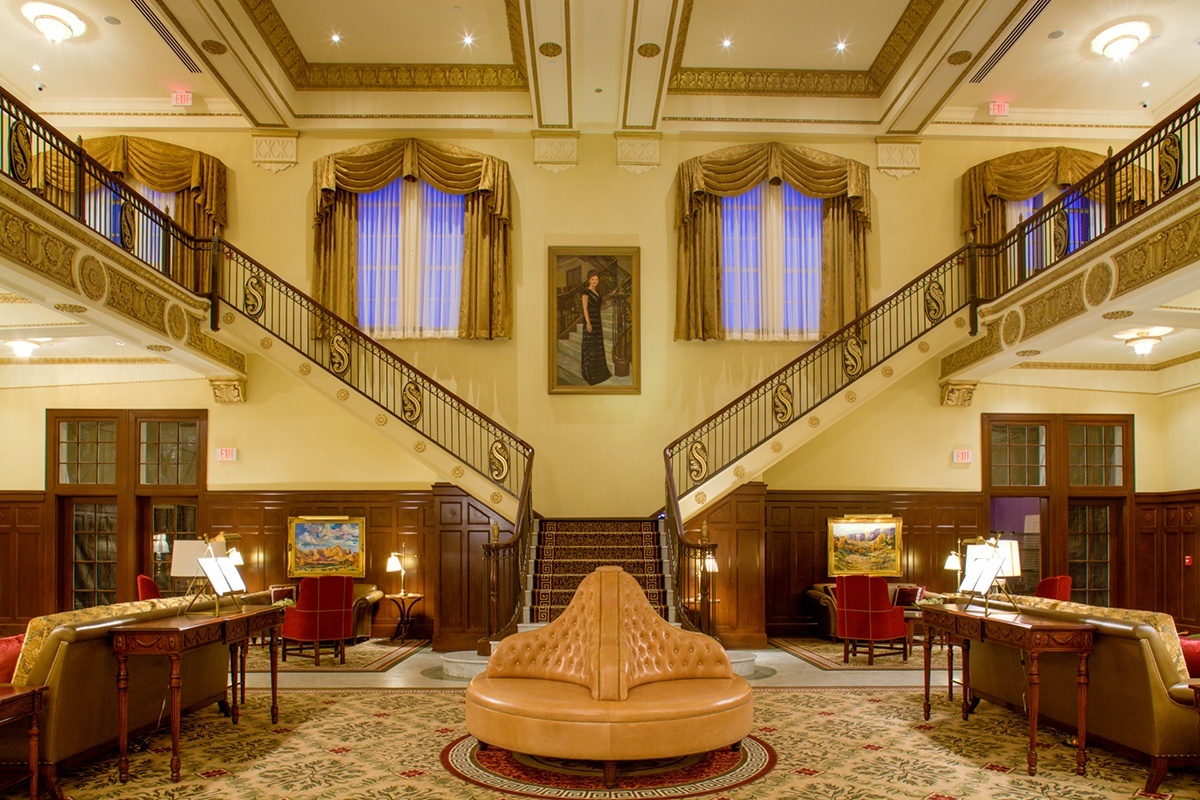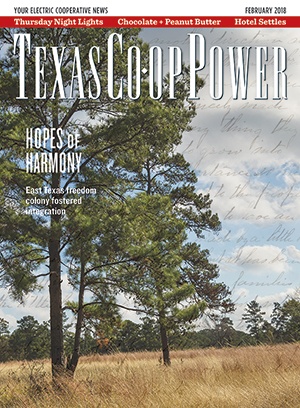Hotel Settles rises 15 stories above downtown Big Spring. Step through the glass doors, and the years fall away. Antique reproduction furnishings, dark paneling, floral tapestry rugs and crystal chandeliers adorn the open lobby. From the terrazzo floor, a double marble staircase topped with carpet runners splits and rises to the iron-railed mezzanine, embellished with golden “S” motifs. Big-band music in the background completes the 1930s ambiance.
Stories galore permeate the tan brick high-rise, once billed as the tallest building between Abilene and El Paso. Ranchers W.R. and Lillian Settles used their oil money to build the art deco hotel in 1930. For two years, the couple operated the ritzy hotel until oil prices plummeted, forcing them into bankruptcy. Subsequent owners managed the 150-room hotel, which housed a ballroom, men’s club, coffee shop and drug store. Such notables as President Herbert Hoover and Elliott Roosevelt, a son of President Franklin D. Roosevelt, stayed there.
The hotel’s boom years continued through the 1950s. Then passenger rail service ceased, a nearby Air Force base closed and Interstate 20 bypassed downtown. Hotel Settles closed in 1980. Owners sold everything they could. Vandals, weather and pigeons damaged the remains.
Enter Dallas businessman G. Brint Ryan, a Big Spring native who bought the run-down property in 2007 and spent $30 million on renovations. Drawing from original blueprints and vintage photos, Ryan’s restoration team incorporated upgrades including a swimming pool, spa, meeting rooms and fitness center. Two wooden phone booths in the lobby are original. At the hotel’s relaunch in December 2013, its iconic rooftop sign flickered back on, once again proclaiming “HOTEL SETTLES” in red neon letters.
Like many locals, Tiffany King grew up knowing Hotel Settles as an abandoned building with broken windows. Homeless people slept inside, she says. Now, King runs the immaculate front desk and escorts visitors on hotel tours. “We have older people who come and remember the hotel as it was when it was originally open,” she says. “They talk about weddings and high school proms that were held here.”
Thirteen Heritage Rooms on the third level reflect the 1930s floor plan, complete with original tile floors in the compact bathrooms. Modestly sized, the rooms come with traditional furnishings and lavish bedding.
Floors 4–13 were configured to accommodate five spacious suites each. For the night, my husband and I are staying in a Tower Room on the 13th floor. Our lofty corner windows overlook Big Spring to the south and eastward to Signal Peak, a distant mesa used as a landmark by early cattlemen.
For a few hours, we slip away to drive through the city’s Comanche Trail Park to see the namesake “big spring” that provided water for Native Americans and early settlers. Today the spring flows artificially. Next, we explore nearby Big Spring State Park, a day-use getaway. From a limestone bluff, we take in panoramic views of Big Spring and surrounding landscape.
Before supper, we order drinks in the Pharmacy Bar and Parlor, named after the hotel’s original drugstore. At a cozy booth in Settles Grill, we relish our artfully grilled salmon and herb-roasted chicken. Later, we peek into the Grand Ballroom, opulently detailed with ornate gold molding, crystal chandeliers and replica 1930s wall fans. Such attention to detail earned the Settles listings on the National Register of Historic Places and Historic Hotels of America list.
Buoyed by the hotel’s rebirth, empty downtown storefronts have begun to fill. “We now have two new boutiques, a restaurant, furniture store and cigar bar,” says Hayley Lewis, a native who works as tourism coordinator at the Big Spring Visitors Bureau. “It’s going to take time, but, thanks to Hotel Settles, downtown will come back.”
Sheryl Smith-Rodgers, a member of Pedernales EC, lives in Blanco.


